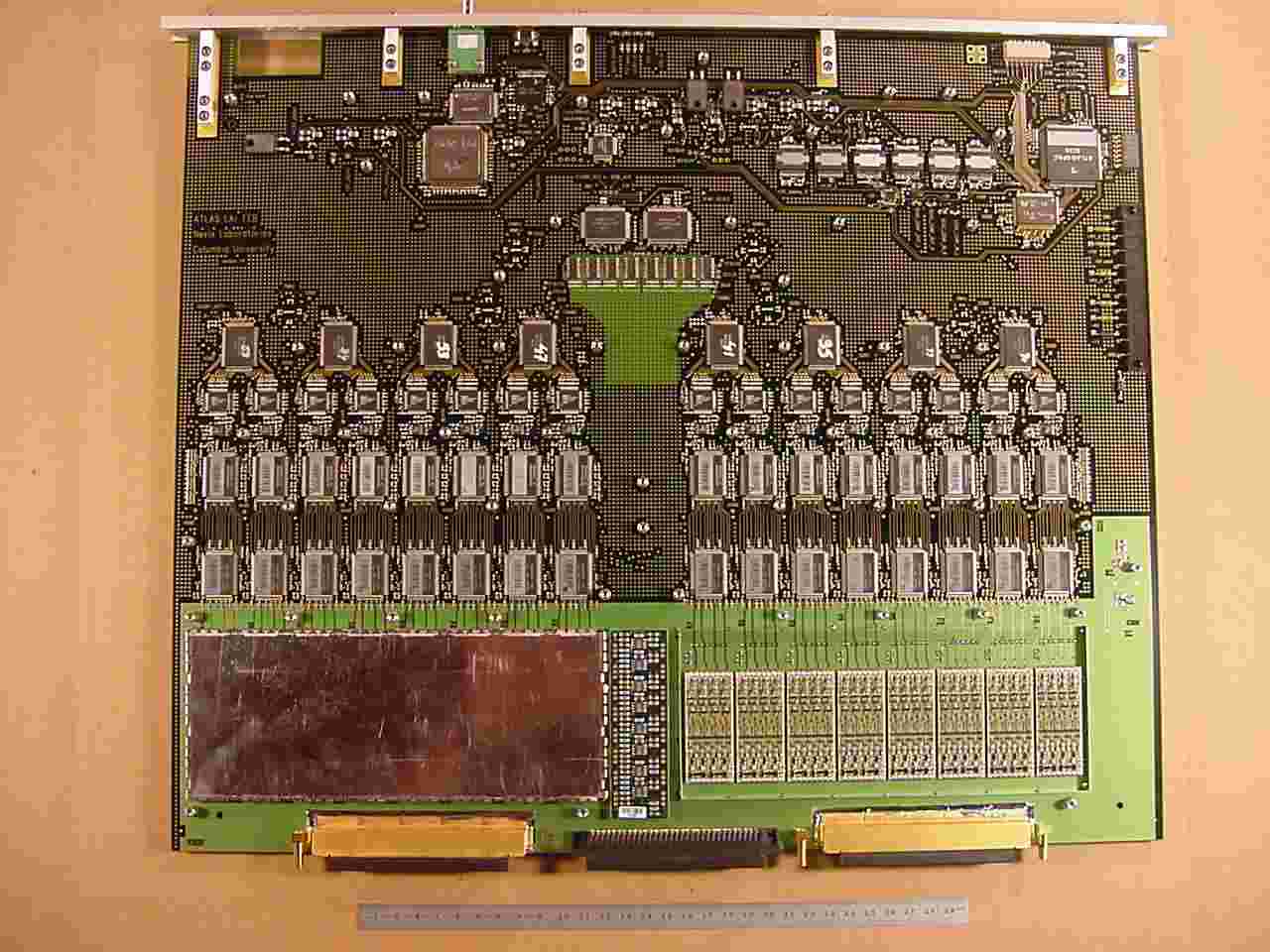Atlas Larg electronics upgrade
Development of radiation hard ADC chip usefull in the radiation environment of SuperLHC. The chip is meant to be part of upgraded Atlas Larg front end electronics.
Development of radiation hard ADC chip usefull in the radiation environment of SuperLHC. The chip is meant to be part of upgraded Atlas Larg front end electronics.
(1) Development of the radiation hard front-end electronics for European Center for Nuclear Research (CERN) super-collider, Geneva,Switzerland. The Atlas FEB is mixed analog and digital electronics with a very high sensitivity input amplifier system. Development included design of optical links for data transmission and the processor unit based on TI DSP TMS320C6414.
(2) Development of the trigger electronics for the D0 experiment at Fermilab, USA. This system performs real time pattern recognition on physics signals coming from D0 liquid argon calorimeter at the rate of 0.8Tbits/sec. My work includes system level analysis, printed circuit design and the development of the pattern recognition firmware (VHDL) for Altera Stratix FPGA’s.
(3) PCI data acquisition card (using Xilinx Spartan-3 FPGA’s) for cosmic ray experiment was developed .
(4) PCIe data acquisition card for Phenix experiment.
(5) USB data acquisition card for Double Choose experiment.
(4) PCIe data card for laboratory optics testing.
Work on the prototype of the digital router system for collecting and filtering raw data from pixel detector of the Alice experiment built at CERN (using ALTERA FPGAs ). Development of readout electronics for NA57 experiment. Development of pads chambers electronics for WA97 experiment
Design, production and integration of the front-end and readout electronics for the TGT calorimeter (R & D program of CERN). Particularly important was the development of the cold front-end system (preamplifier, summing amplifier and shaper working at liquid argon temperature). The system, fulfilling the Large Hadron Collider requirements, was developed in radiation hard GaAs technology. The parameters of these electronics, in particular the noise figures and dynamic range, were at the cutting edge of technology. In 1995 I worked on the development of the electronics for the hadronic end-cap calorimeter (HEC) of the Atlas experiment. Designed calibration system for it and also analog cold front-end system in GaAs technology .
Development, implementation and installation of the trigger electronics for the Backward Electromagnetic Calorimeter of the H1 experiment at DESY nuclear center, in Hamburg, Germany. This trigger included both analog (fast, low noise) and digital electronics (fast pattern recognition), working very effectively in pipeline mode. A great volume of physics data (proton structure function) has been taken with this trigger. The work included a stay and work at DESY.
Development of a specialized computer system for a high level trigger used in the High Energy Physics experiments (Joint Institute of Nuclear research at Dubna, Russia). Developed a fast, user micro-programmable, CAMAC-oriented processor with RISC architecture (based on bit slices of AMD). The work included development of memory modules, interface hardware and software including the compiler for the microprogramming language, special assembler language, compiler, and simple operating system. The work in this field is summed up in my Ph.D. dissertation “Specialized Real Time Computer System with RISC Processor Architecture”.
Participated in the software development of an automated on-line system for processing information coming form bubble chamber experiments. The software written, about 10000 Fortran lines of code, had the function of data handling and organization of the data processing.
Development of hardware for Data General Nova 820 computer– interfaces for non-standard peripheral units, including disc, magnetic tape and printer interfaces.
© Copyright MyWebSite.
Layout by Atomic Website Templates
